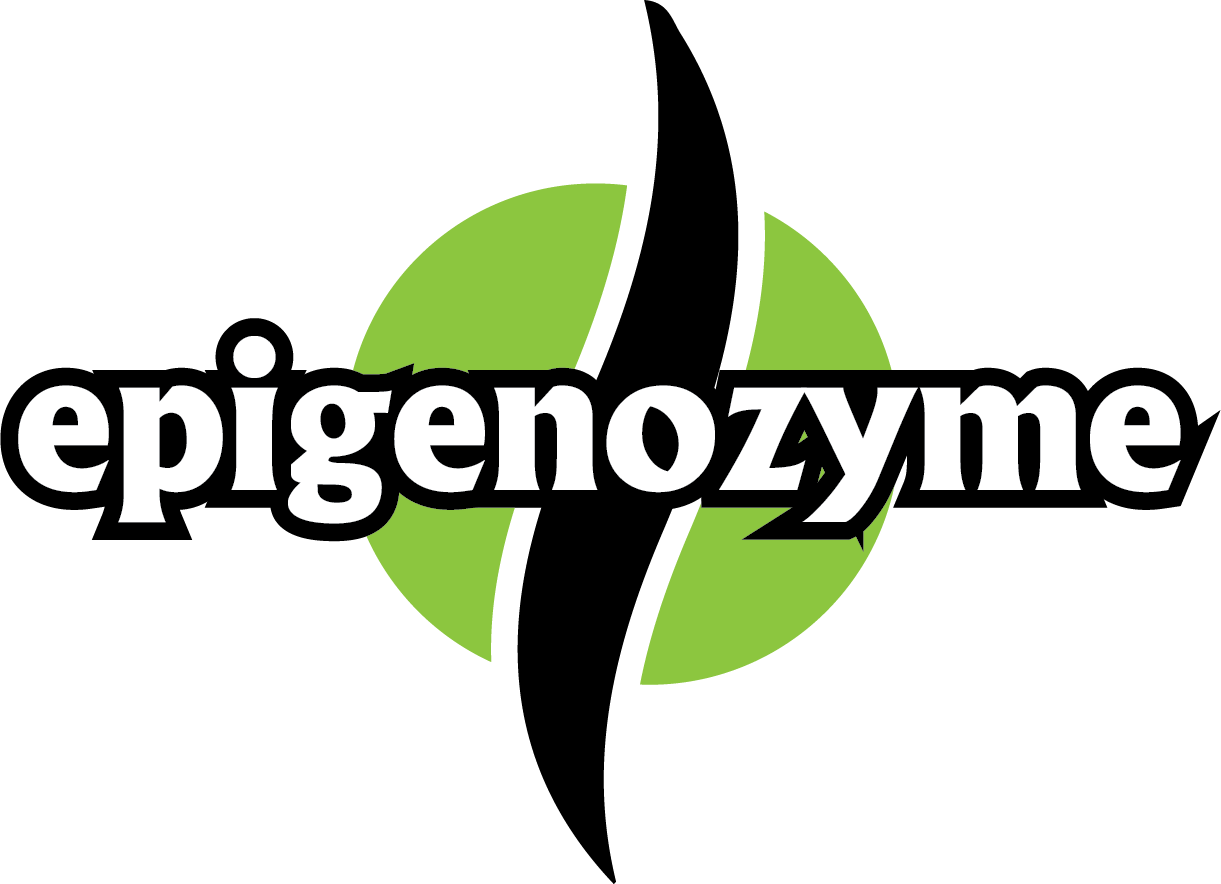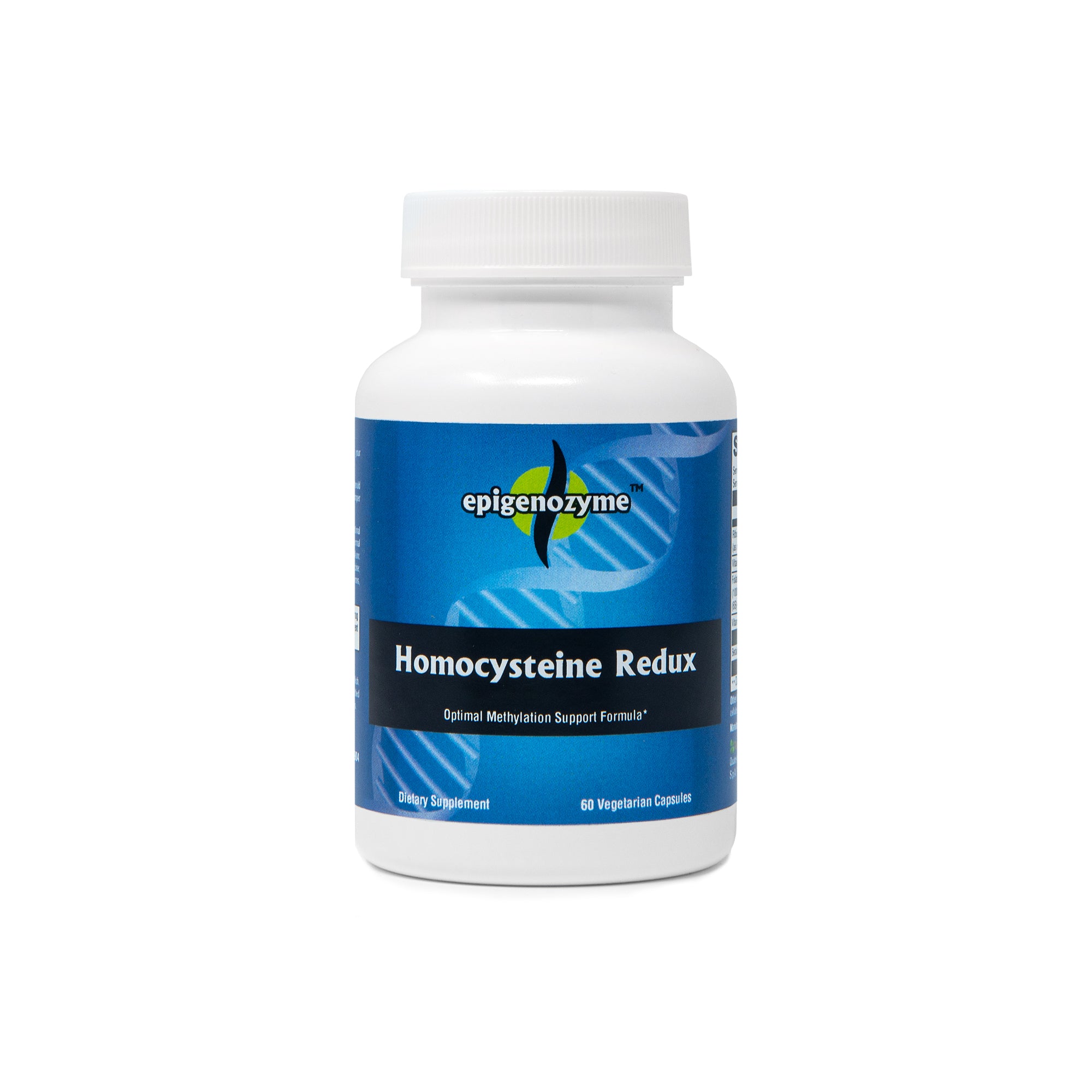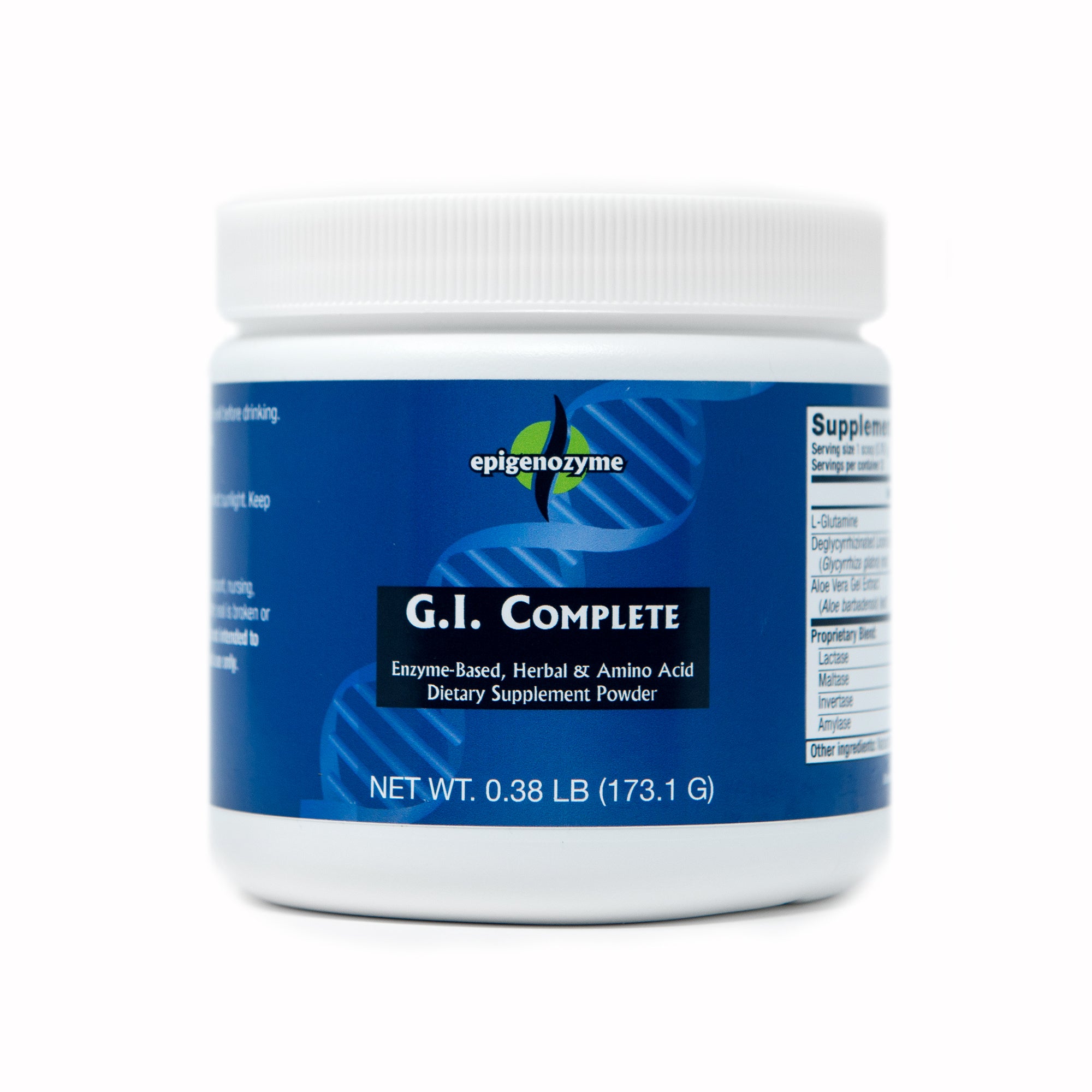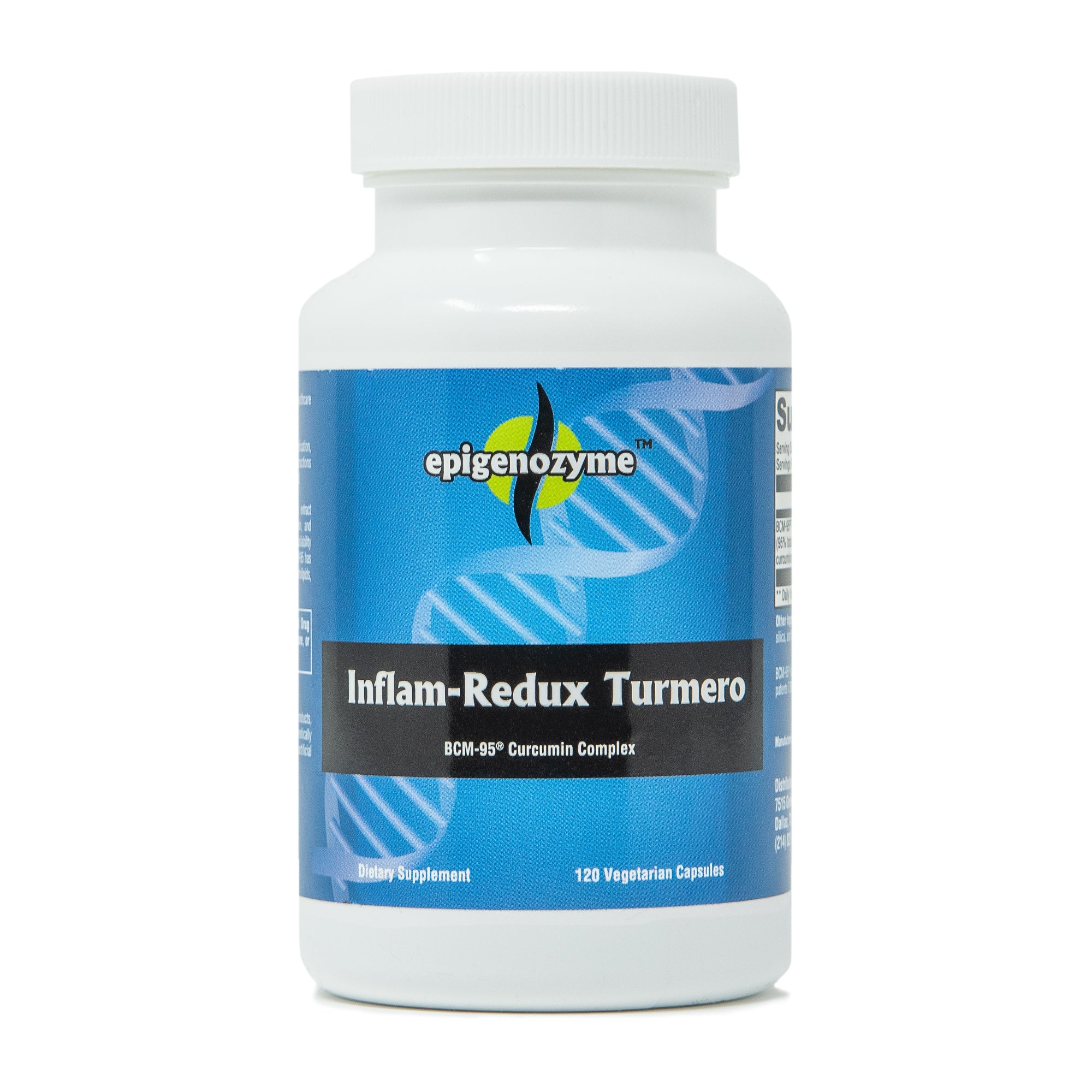You have no items in your shopping cart.
Vitamin E
- Home
- Vitamin E
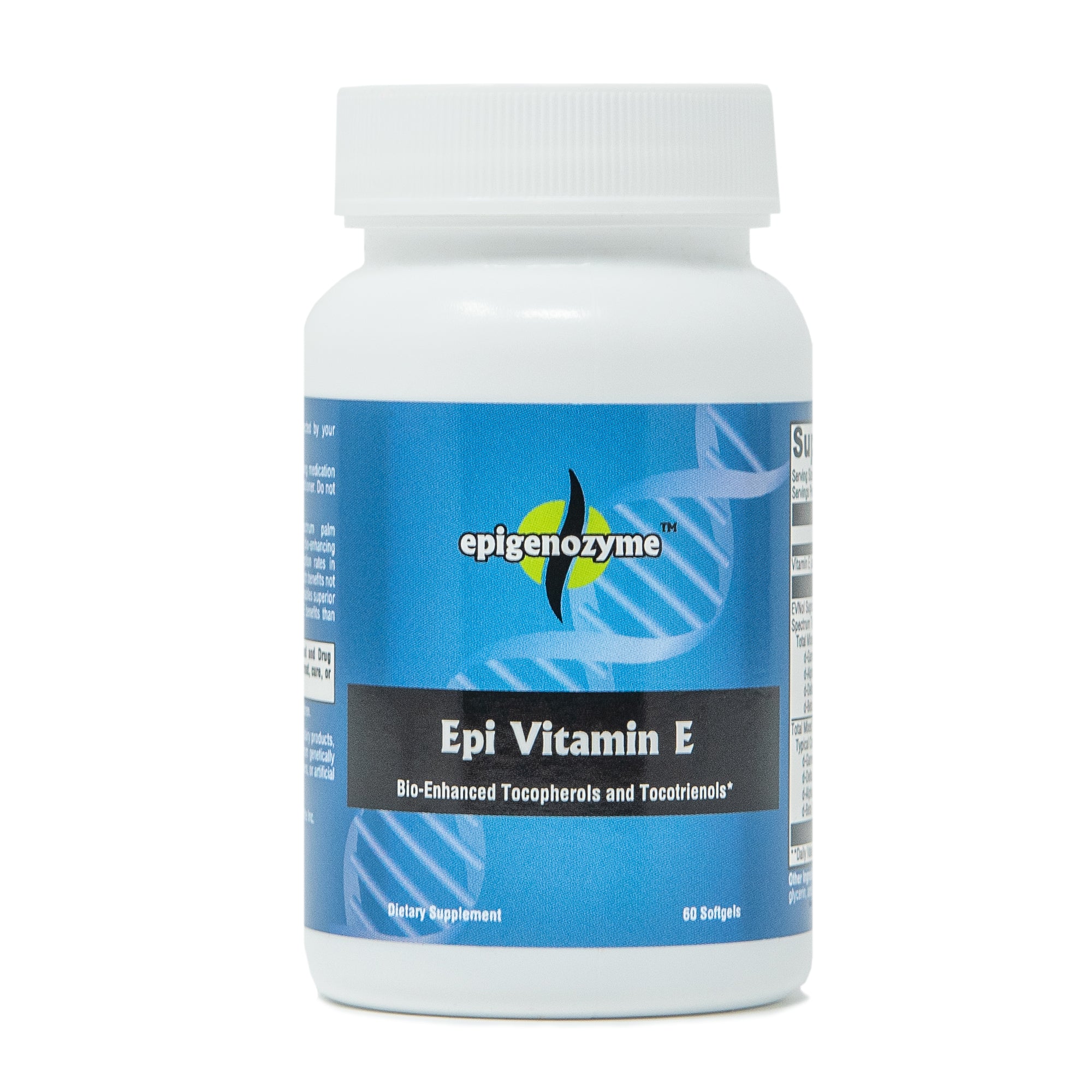
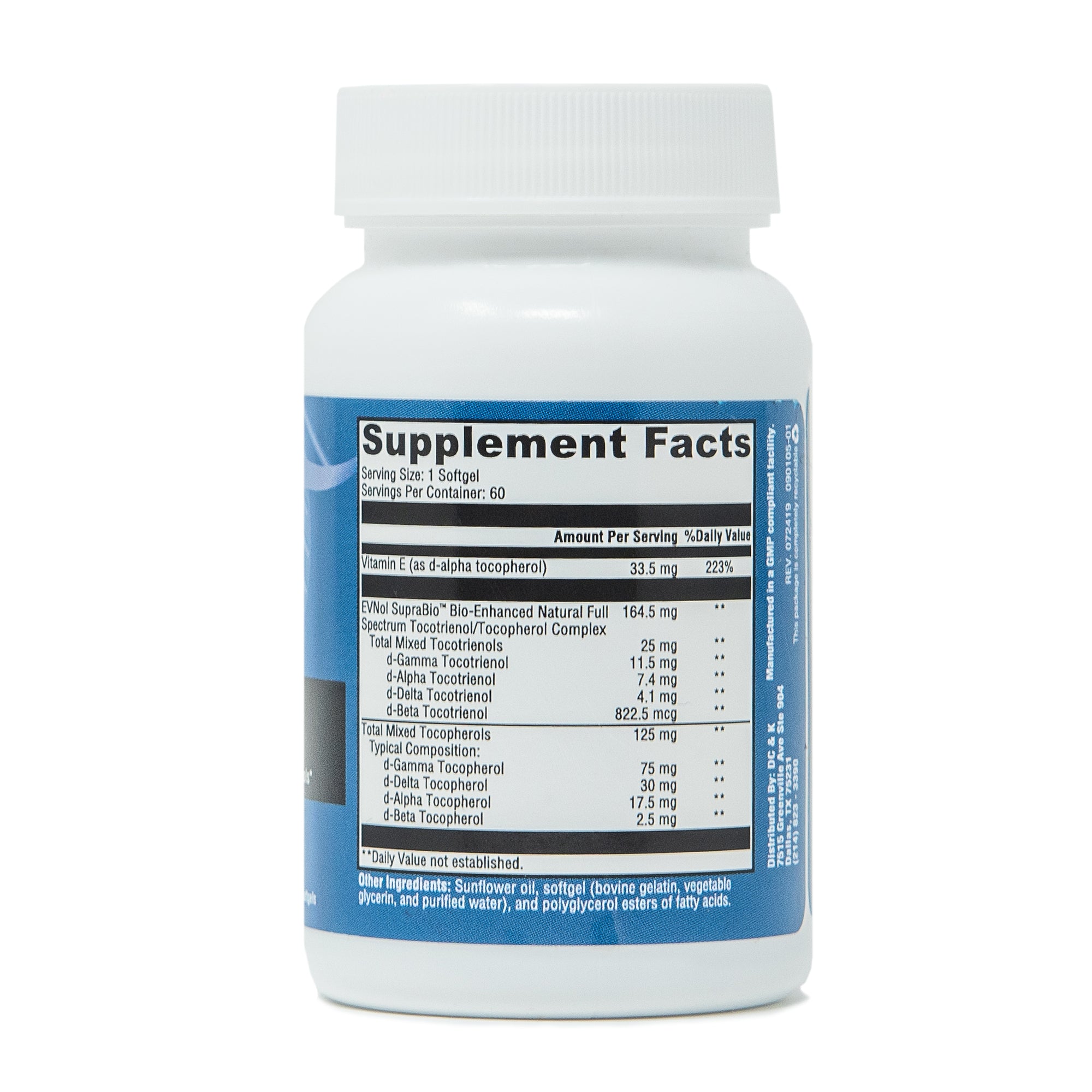
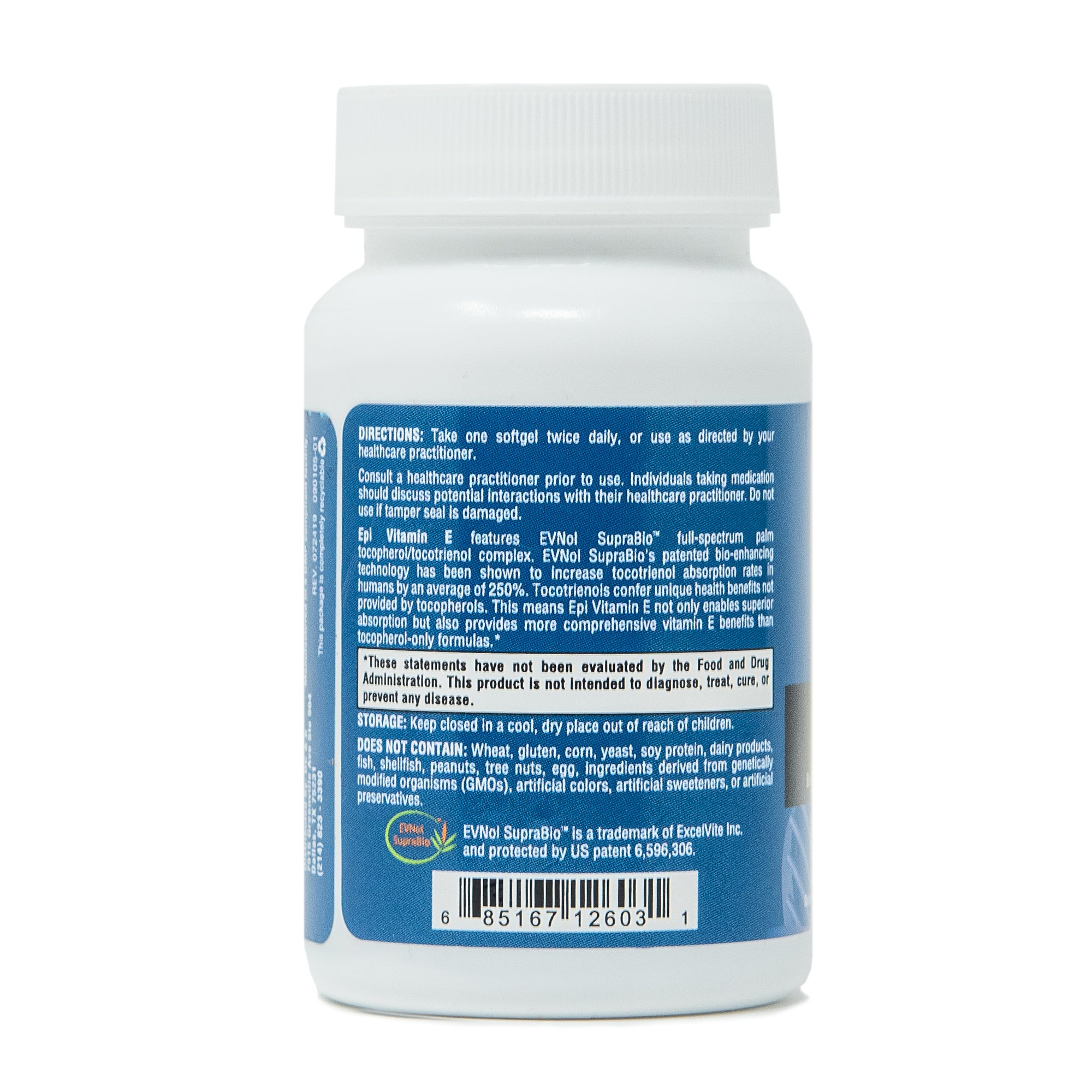
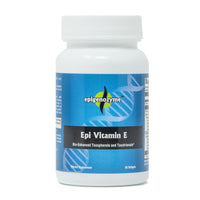
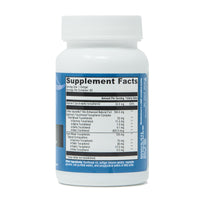
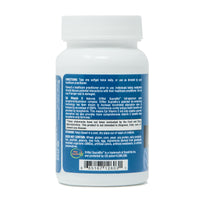
Vitamin E
- Sale price
- $39.00 Sale
- Regular price
- $39.00
Clinical Applications
» Offers Antioxidant Protection for Cell Membranes and Lipids*
» Supports Healthy Cytokine and Eicosanoid Balance*
» Supports Neuroprotection and Cognitive Health*
» Supports Cardiovascular, Nervous, and Reproductive Systems*
» Supports Liver Health*
» Provides Mixed Tocopherols and Tocotrienols for Comprehensive Vitamin E Nutrition*
Vitamin E, in its natural form, comprises eight different compounds:
alpha-, beta-, gamma-, and delta-tocopherols and alpha-, beta-,
gamma-, and delta-tocotrienols. Both tocopherols and tocotrienols
are important to human health. Known as the “master antioxidant,”
vitamin E has the ability to attenuate oxidative stress, and its
antioxidant-related effects on various organs and systems have
been the focus of vast research. More recently, non-antioxidant
mechanisms have been proposed, such as those that affect cell-
signal transduction and gene expression.[1] Though the vast majority
of research has been on alpha-tocopherol, recent mechanistic studies
indicate that other isomers of vitamin E, such as gamma- and delta-
tocopherols and tocotrienols, have superior antioxidant and cell-
signaling properties that offer greater health benefits.*[2,3]
*Statements regarding dietary supplements have not been evaluated by the FDA and are not intended to diagnose, treat, cure, or prevent any disease or health condition.
1. Azzi A, Meydani SN, Meydani M, et al. The rise, the fall and the renaissance of vitamin E. Arch Biochem Biophys. 2016 Apr 1;595:100-08. [PMID: 27095224]
2. Jiang Q, Yin X, Lill MA, et al. Long-chain carboxychromanols, metabolites of vitamin
E, are potent inhibitors of cyclooxygenases. Proc Natl Acad Sci U S A. 2008 Dec
23;105(51):20464-69. [PMID: 19074288]
3. Ahsan H, Ahad A, Iqbal J, et al. Pharmacological potential of tocotrienols: a review. Nutr Metab (Lond). 2014 Nov 12;11(1):52. [PMID: 25435896]
Related Products
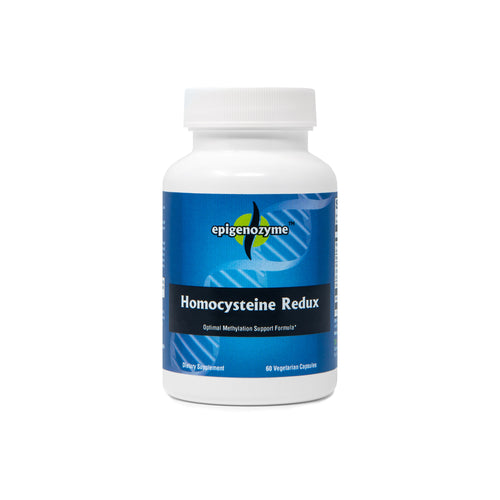
Epigenozyme Homocysteine Redux is designed to support optimal methylation and help maintain healthy homocysteine levels already within normal range. It features 5 key nutrients involved in homocysteine metabolism: folate as calcium folinate and Quatrefolic® for increased bioactivity; trimethylglycine; and vitamins B12, B6, and B2. These 5 nutrients, provided in activated forms, support enhanced methylation and overall cardiovascular health.
*Statements regarding dietary supplements have not been evaluated by the FDA and are not intended to diagnose, treat, cure, or prevent any disease or health condition.
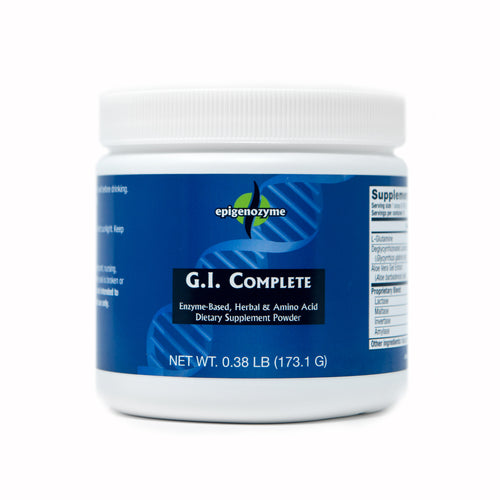
Epigenozyme G.I. Complete is part of a dietary program intended to support the intestinal tract and intestinal lining*. This formula has flavonoids, carotenoids, and phytochemicals that may nourish gastrointestinal tissue*. It includes extracts with mucilage content and uses glycoproteins that help sustain the mucous membrane*. This product incorporates plant sterols, ferulic acid esters intended to support the enteric nervous system*.
*Statements regarding dietary supplements have not been evaluated by the FDA and are not intended to diagnose, treat, cure, or prevent any disease or health condition.
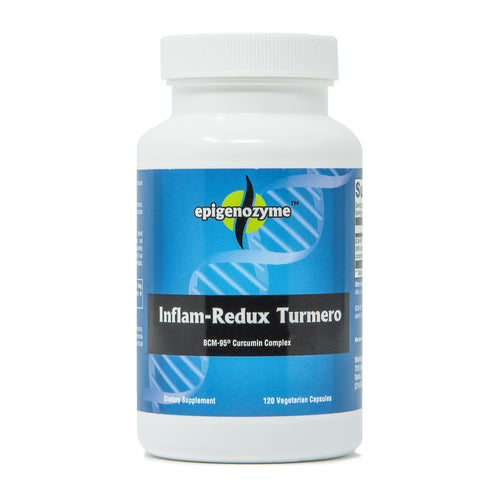
Epigenozyme Inflam-Redux Termero features BCM-95®—a 100% pure turmeric extract standardized to curcumin, demethoxycurcumin, bisdemethoxycurcumin, and essential oils of turmeric rhizome. This natural composition optimizes bioavailability and reflects true turmeric identity to deliver optimal health benefits. BCM-95 has been extensively studied and shows broad efficacy without the use of phospholipids, excipients, additives, carriers, nanotechnology, bioenhancers.*
*Statements regarding dietary supplements have not been evaluated by the FDA and are not intended to diagnose, treat, cure, or prevent any disease or heath condition,
- Sale price
- $70.00 Sale
- Regular price
- $70.00
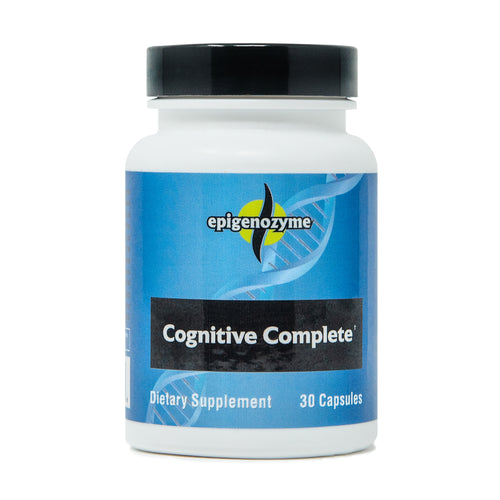
Maintaining cognitive function is an increasingly important challenge with the aging United States population. Aging is often associated with functional changes in the brain that can affect event recall ability, thought organization, and ability for self-expression. While some memory loss is common in the aging population, factors such as free-radical damage, nutrient deficiencies, lifestyle choices and emotional stress are known to affect cognition with age.
The brain is part of the nervous system, which is made up of neurons responsible for processing and transmitting information using neurotransmitters and electrical ion channels. Maintaining the function of various aspects of neuron communication is integral to maintaining optimal cognitive function.
Epigenozyme Cognitive Complete provides vinpocetine and ginkgo biloba to support cerebral blood circulation, decrease excitotoxicity and scavenge damaging free radicals. In addition, vinpocetine has specifically been shown to inhibit phosphodiesterase, and therefore helps increase cerebrvascular blood flow and improve memory. Together with huperzine A, a potent acetylcholine sparing nutrient, Epigenozyme Cognitive Complete provides optimal dosages of three of the most well studied ingredients for targeted, multidimensional cognitive support.
Suggested Use:
1 capsule per day or as recommended by your health care professional
*Statements rearging dietary supplements have not been evaluated by the FDA and are not intended to diagnose, treat, cure, or prevent any disease or health condition.
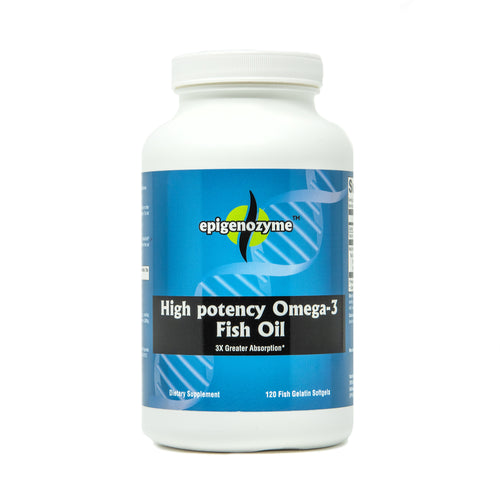
Epigenozyme High Potency Omega-3 Fish Oil contains natural enzymatically enhanced monoglyceride fish oil that has a three times greater EPA/DHA absorption rate than an equivalent dose of ethyl ester fish oil*. Formulated to minimize digestive discomfort and decrease risk of burping up fish taste*. Support cardiovascular health*. Support anti-inflammation*. Support cognitive, brain, and eye health*.
*Statements regarding dietary supplements have not been evaluated by the FDA and are not intended to diagnose, treat, cure, or prevent any disease or health condition.
- Sale price
- $88.00 Sale
- Regular price
- $88.00
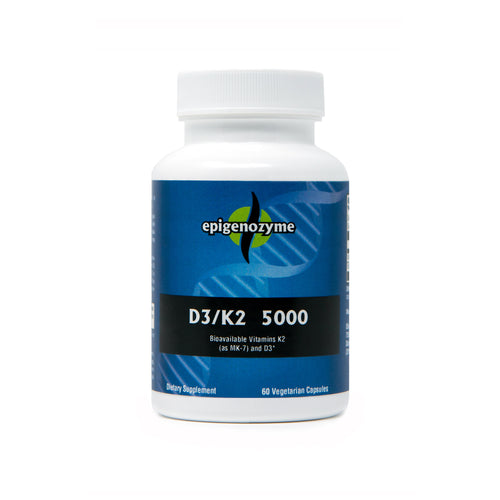
Epigenozyme K2/D3 5000 features the most bioavailable and bioactive form of supplemental vitamin K2 available and vitamin D3 (cholecalciferol), the identical form in which vitamin D is derived in the body from cholesterol and synthesized by sunlight on the skin. Studies confirm safety and efficacy for bone and heart health.* Vitamin K2 supports healthy bones, and should not be confused with Vitamin K1, which increases clotting*. There is no Vitamin K1 in this product.
*Statements regarding dietary supplements have not been evaluated by the FDA and are not intended to diagnose, treat, cure, or prevent any disease or health condition.
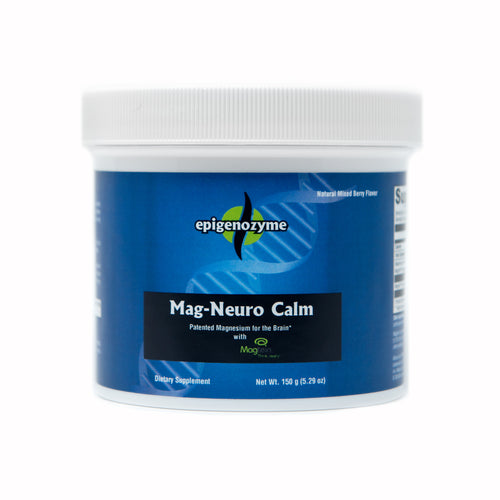
*Statements regarding dietary supplements have not been evaluated by the FDA and are not intended to diagnose, treat, cure, or prevent any disease or health condition.
- Sale price
- $65.00 Sale
- Regular price
- $65.00
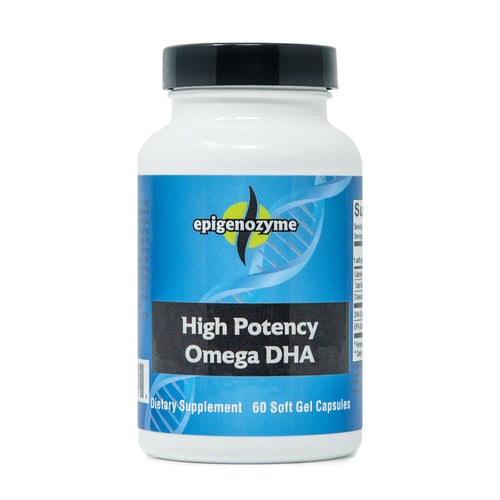
Epigenozyme High Potency Omega DHA is a high-concentration docosahexaenoic acid (DHA) fish oil formula for those needing intensive nutritional support from this essential fatty acid. DHA, or docosahexaenoic acid, is a fatty acid well-known for its role in cardiovascular and cognitive health, as well as in boosting mood, memory and focus. It is sourced from waters off the Chilean coast, where cold, fresh waters provide the cleanest, most sustainable source of fish in the world. Each soft gel delivers 580 mg DHA in the natural triglyceride form for superior absorption.
CLINICAL APPLICATIONS
- Targeted Support to Maintain Healthy Blood Pressure Levels
- Boosts Cognitive Function and Healthy Brain Development
- Increases Visual Acuity and Ocular Health
INGREDIENT BENEFITS
Fish Oil Delivery – Triglycerides vs. Ethyl Esters
While the amount of EPA and DHA provided in a fish oil product is important for efficacy, the type of fish oil delivered is another significant factor in defining fish oil effectiveness. The human body is accustomed to digesting and absorbing EPA and DHA in the natural triglyceride form. A review of the existing literature has shown that fish oil provided in the natural triglyceride form is more efficiently digested and is 70% more absorbable than the ethyl ester form.
Cardiovascular Health
DHA has been found to have positive effects on key aspects of cardiovascular health.
Ocular and Cognitive Health
The retina is a specialized portion of the nervous system that has one of the highest levels of long-chain fatty acids in the human body, and is especially high in DHA. In adults, fish and DHA intake reduced age-related visual concerns, according to several studies.
Maternal and Infant Health
Research has confirmed that maternal fatty acid levels, especially DHA levels, steadily drop in late pregnancy, increasing risk for postpartum mood changes. Rapid growth in the brain occurs during the last trimester of pregnancy and the first several postnatal months; therefore, the need for maternal DHA is critical during these months for brain development.
Suggested Use:
1 soft gel capsule per day or as recommended by your health care professional
*Statements regarding dietary supplements have not been evaluated by the FDA and are not intended to diagnose, treat, cure, or prevent any disease or health condition.
- Sale price
- $45.00 Sale
- Regular price
- $45.00
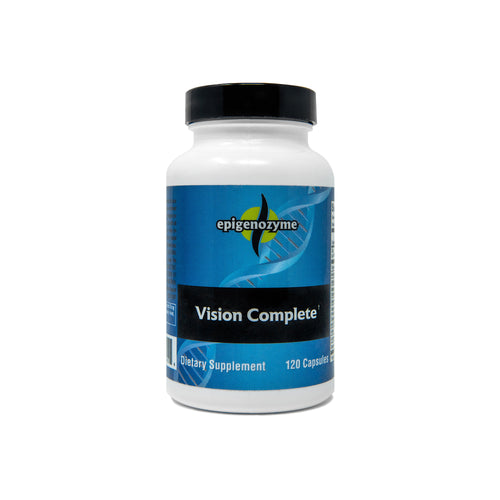
Vision Complete provides excellent support for those who want to maintain eye health and also for those seeking macular support as they age.*
• Provides Key Antioxidant Support for Eyes*
• Supports Macular Health*
• Helps Protects Macula Against Light Damage*
• Supports Ocular Circulation*
In the US, eye health is a major concern for those over 60 years of age. The eye is the most susceptible organ to oxidative damage caused by light, toxins (smoke), atmospheric oxygen and abrasion. As ultraviolet and blue light pass through the retina to the photoreceptors (rods and cones) and the pigmented epithelial (PE) cells, reactive oxygen species (free radicals) are generated. If there are insufficient antioxidants available to neutralize free radicals, the eye undergoes excessive oxidative damage.
Age Related Macular Degeneration (ARMD) is the number one cause of blindness in America. ARMD Eye Compelete was formulated with a specific blend of botanicals, nutrients, antioxidants and minerals, shown in research to support healthy eye function. The formula provides antioxidant support as well as key nutrients to care for and maintain the long-term health of the eyes.
Suggested Use: 2 capsules per day or as recommended by your health care professional.
*Statements regarding dietary supplements have not been evaluated by the FDA and are not intended to diagnose, treat, cure, or prevent any disease or health condition.
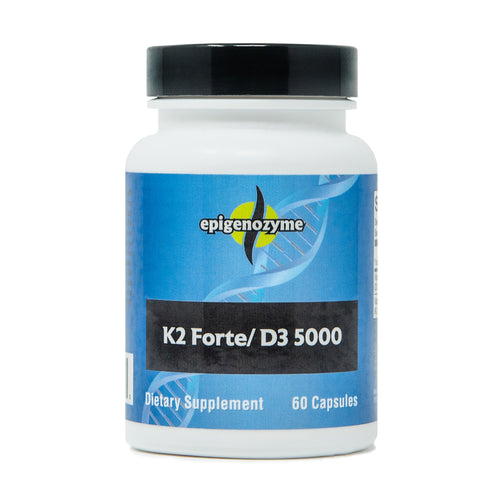
Supplementing vitamin D3 and K2 can help promote bone health and maintain health cardiometabolic function. Ortho Molecular Products is the exclusive provider of MenaQ7® PRO, the most widely studied form of vitamin K2 as MK-7.
CLINICAL APPLICATIONS
- Supports Healthy Calcium Balance
- Promotes Bone Health
- Supports Cardiovascular Health and Arterial Elasticity
- Boosts Immune Function
OVERVIEW
New research is focusing on the synergistic relationship between vitamin K2 and vitamin D3, for bone and cardiovascular health. A group of naturally occurring and structurally similar, fat-soluble vitamins, vitamin K is essential for the proper utilization of calcium. Through its activation of the protein osteocalcin, vitamin K helps to bind newly absorbed calcium to the mineral matrix in bone. In addition, vitamin K has been found to help maintain bone mineral density by decreasing the activity of osteoclasts, a cell that breaks down the bone matrix. Vitamin K also provides critical cardiovascular protection by helping to activate matrix Gla protein (MGP), an inhibitor of circulatory calcification. Thus, vitamin K and vitamin D not only share similar qualities, but they also act synergistically within the body.
The addition of MenaQ7® PRO to this formula is backed by extensive research. Dr. Leon Schurgers, world-renowned expert in vitamin K2 as MK-7 research for cardiovascular and bone health, and his team of research scientists have conducted over 15 clinical trials on MenaQ7® PRO through the University of Maastricht.
Vitamin K2 with D3 includes 45 mcg of MenaQ7® PRO, the most widely studied form of vitamin K2 as MK-7, and 5,000 IU of vitamin D3 per capsule for optimal absorption and use by the body.
INGREDIENT BENEFITS
Vitamin K Depletion
Although most people consume adequate dietary vitamin K to maintain sufficient blood clotting, most do not consume enough to meet cardiovascular and bone health needs. In fact, approximately 70% of the western population is deficient in vitamin K2.
Bone Health
Building and maintaining healthy bones requires a number of key nutrients including vitamin K, for the proper binding of calcium to the bone matrix.
Cardiovascular Health and Blood Sugar Balance
Vitamin K plays a key role in supporting the cardiovascular system as well as blood sugar balance already within normal levels.
Immune Modulation
New evidence also suggests vitamin K plays a central role in boosting immune function.
Suggested Use:
1 or more capsules per day or as recommended by your health care professional
*Statements regarding dietary supplements have not been evaluated by the FDA and are not intended to diagnose, treat, cure, or prevent any disease or health condition.
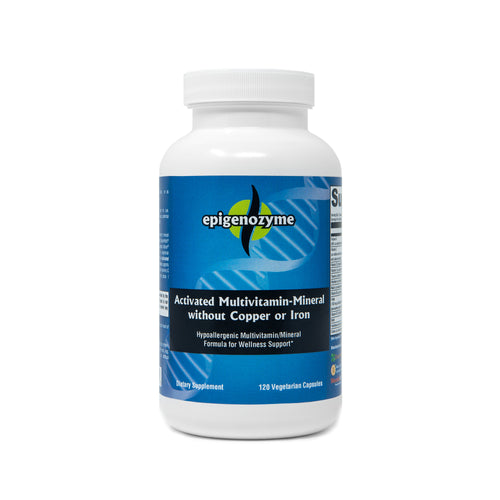
Epigenozyme Activated Mutivitamin-Mineral without Copper and Iron Multivitamin is a high-quality, hypoallergenic multivitamin designed to help meet the daily nutritional needs of adults. It features natural and activated forms of vitamins, such as beta-carotene, cholecalciferol, folate as L-5-MTHF (5-methyltetrahydrofolate), and B12 as methylcobalamin as well as a chelated minerals. The activated nutrient profile supports vitamin/mineral synergism*
*Statements regarding dietary supplements have not been evaluated by the FDA and are not intended to diagnose, treat, cure, or prevent any disease or health condition.
- Sale price
- $45.00 Sale
- Regular price
- $45.00
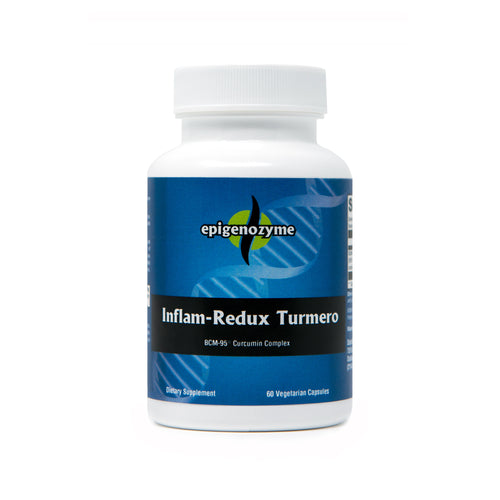
Epigenozyme Inflam-Redux Teremero features BCM-95®—a 100% pure turmeric extract standardized to curcumin, demethoxycurcumin, bisdemethoxycurcumin, and essential oils of turmeric rhizome. This natural composition optimizes bioavailability and reflects true turmeric identity to deliver optimal health benefits. BCM-95 has been extensively studied and shows broad efficacy without the use of phospholipids, excipients, additives, carriers, nanotechnology, or bioenhancers.*
*Statements regarding dietary supplements have not been evaluated by the FDA and are not intended to diagnose, treat, cure, or prevent any disease or heath condition.
- Sale price
- $55.00 Sale
- Regular price
- $55.00
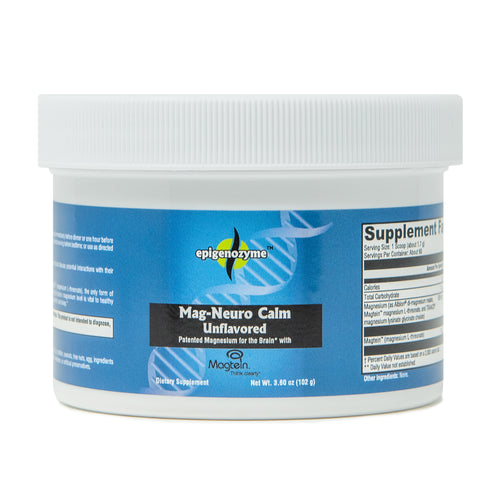
*Statements regarding dietary supplements have not been evaluated by the FDA and are not intended to diagnose, treat, cure, or prevent any disease or health condition.
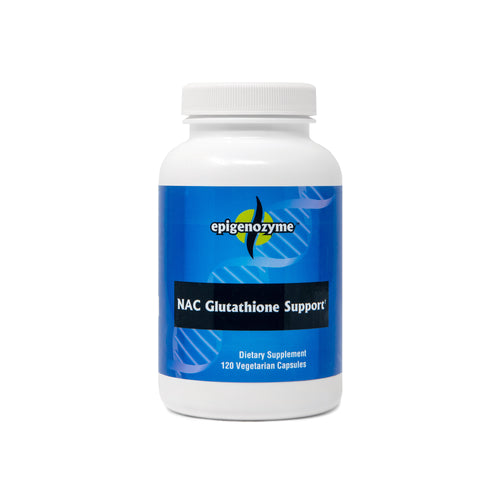
*Statements regarding dietary supplements have not been evaluated by the FDA and are not intended to diagnose, treat, cure, or prevent any disease or health condition.
- Sale price
- $42.00 Sale
- Regular price
- $42.00
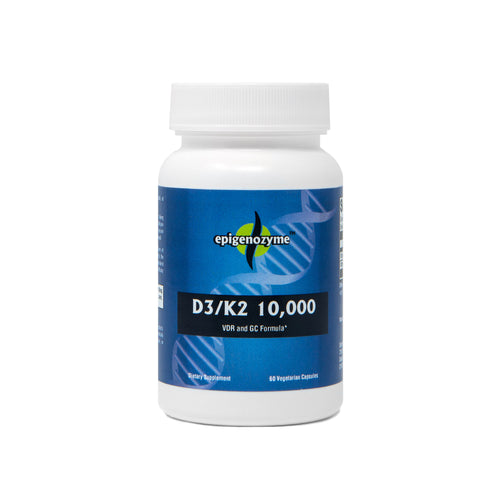
Epigenozyme K2/D3 10,000 features the most bioavailable and bioactive form of supplemental vitamin K2 available and vitamin D3 (cholecalciferol), the identical form in which vitamin D is derived in the body from cholesterol and synthesized by sunlight on the skin. Studies confirm safety and efficacy for bone and heart health.* Vitamin K2 supports healthy bones, and should not be confused with Vitamin K1, which increases clotting*. There is no Vitamin K1 in this product.
*Statements regarding dietary supplements have not been evaluated by the FDA and are not intended to diagnose, treat, cure, or prevent any disease or health condition.
